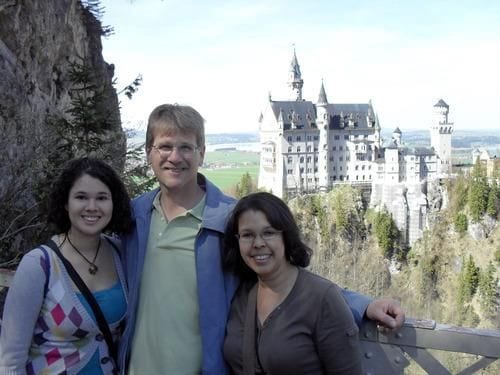Mark Zuckerberg sets fitness goals
The Facebook founder and CEO has been vocal about his passion for running, especially after he ran a mile a day in 2016, partaking in his own 365-mile challenge. “I’ve found running is a great way to clear my head, to get more energy and to find time to think about challenges,” Zuckerberg posted online after he reached his goal. “I find these yearly challenges always take me in unexpected directions.”
Reshma Saujani schedules “me time” with herself
As founder and CEO of Girls Who Code, Reshma Saujani doesn’t have a lot of downtime, so she makes sure to schedule her own time for 7:30 every morning –– a ritual that has become non-negotiable in her home. As a working mom, Saujani struggles with finding alone time and prioritizing self-care, so her scheduled ritual has allowed her to carve out time for herself every day.
Bill and Melinda Gates play pickleball
The Gates recently told CNBC that they like to play a game called “pickleball,” their own twist on tennis — played instead with paddles and a plastic ball. As co-chairs of the Bill and Melinda Gates foundation, the couple is almost always busy, but they always make time to unwind and bond with family, whether it’s reading, meditating, or even playing games as a couple. “We’re huge pickleball fans,” Gates said.
Mark Cuban puts his phone away
We talk a lot about setting boundaries with our devices, and in an episode of the Thrive Global Podcast, Mark Cuban proved he’s serious about his own screen time boundaries. The Dallas Mavericks owner and Shark Tank star works with tech companies professionally, but to wind down at home, he puts his phone away, and even limits Netflix time around the house.
Jeff Bezos embraces work-life harmony
While some of us need a clear break between our work life and our home life, Amazon CEO Jeff Bezos says he’s found his happy medium with work-life harmony.“I prefer the word ‘harmony’ to the word ‘balance’ because balance tends to imply a strict tradeoff,” Bezos explained to Thrive Global. “In fact, if I’m happy at work, I’m better at home — a better husband and better father. And if I’m happy at home, I come into work more energized — a better employee and a better colleague.”
While our favorite activities are personal and individualized, it’s important to make the time to put ourselves first, no matter how busy our days can be. Here are a few microsteps that will help you make it a point to wind down:
1. Pick a time at night when you turn off your devices — and escort them out of your bedroom
Our phones are repositories of everything we need to put away to allow us to sleep — our to-do lists, our inboxes, and multiple other projects. Disconnecting from the digital world will help you sleep better, deeply recharge and reconnect to your wisdom and creativity. Set an alarm every night that will signal your “powering down” time, and leave your devices outside of your bedroom. You’ll find that you’ll sleep better, and wake up feeling recharged and restored.
 2. Take a short walk and focus on your breathing
2. Take a short walk and focus on your breathingYou can still your mind even when you’re moving your body. Whether you’re scheduling a walking meeting, or just taking a stroll down the block to get out of the office, taking a walk every day can make a huge impact on your productivity and well-being, even if it’s only a few minutes. Take a step away from your desk –– you’ll return with renewed focus and purpose.
3. Schedule appointments with yourself for an activity you love
Whether you need your quick AM workout, a dinner with old friends, or just a solo movie night once a week, make an appointment with yourself, and show up. Make outside activities a priority by scheduling time on your calendar. It’s difficult to carve out time for ourselves when we don’t have it in writing, so it’s important to make your scheduling a physical action.
Feeling like you need to focus more on yourself and taking some time to unwind (while becoming more productive)? Choose a new city to live in for a month and book private apartments, workspaces and fitness studios, without the hassles. Learn more here.
Originally posted on Thrive Global.
 Rebecca Muller,
Rebecca Muller,
Rebecca is a graduate of New York University, where she studied Media, Culture and Communications with a minor in Creative Writing. For her undergraduate thesis, she researched the relationship between women and fitness media consumerism.





 Kelsey Dixon is the “Dixon” of the female millennial duo who founded
Kelsey Dixon is the “Dixon” of the female millennial duo who founded 

















